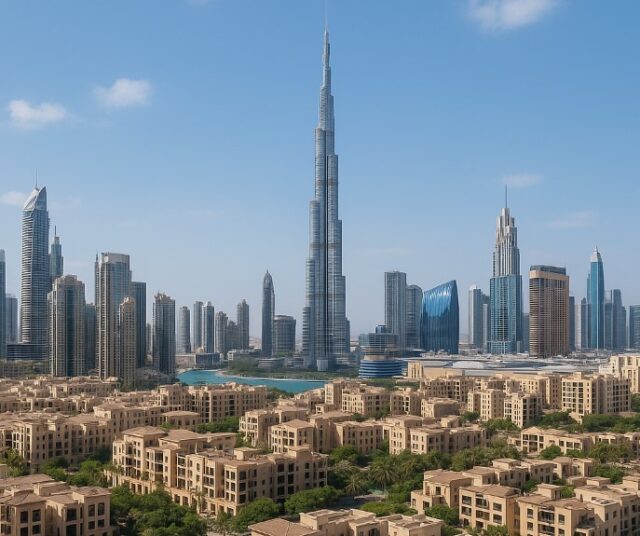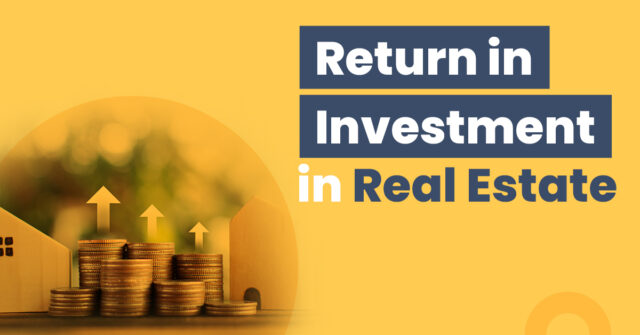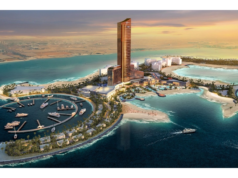
Dubai’s real estate market remains one of the most active and evolving in the world. Investors often face a choice between two major types of properties:
- Primary (off-plan)
- Secondary (resale)
Each option carries its own benefits and challenges, and selecting the right one depends on investment goals, risk appetite, and desired timeline.
The Primary Market

Primary real estate in Dubai refers to newly launched or off-plan properties sold directly by developers. These properties are either under construction or recently completed, and they have never been lived in.
Buyers typically engage during the early sales phase, sometimes even before the official launch.
Purchasing directly from a developer often comes with specific benefits not available in the resale market.
Buyers may receive exclusive pricing, favorable terms, and the chance to choose unit features that align with their preferences.
Developers usually structure deals to incentivize early commitment, creating an opportunity for investors seeking high returns over time.
Key Features
- Properties sold at pre-launch or launch pricing
- Flexible payment plans including post-handover options
- Ability to customize aspects such as layouts or interiors
- Developer-backed warranties for added peace of mind
Pros
Lower starting prices make entry into the Dubai market easier for new investors. Capital appreciation is often substantial, particularly in high-demand developments.
Modern projects offer futuristic architecture, energy-efficient features, and community-centric layouts designed for convenience and comfort. Investors who are not in need of immediate returns but aim for future growth benefit significantly.
End-users looking for a personalized living space also find value in this option.
Flexible payment terms reduce upfront financial pressure, making it easier to allocate capital elsewhere during construction.
Buyers often work closely with developers to monitor progress and ensure the end product matches expectations. Longer timelines also allow for strategic planning related to resale or occupancy.
Cons
Construction delays can derail financial plans and shift expected returns. Some projects may extend far past their projected handover dates.
Lack of immediate usability makes it impossible to generate rental income right after purchase. Investors must wait for completion before earning any returns.
Price fluctuations during the build phase can create anxiety, especially in a rapidly changing market. Off-plan properties can become less competitive if resale options offer better pricing or location advantages during the same period.
Buyer reliance on developer reputation and construction standards adds another layer of risk.
The Secondary Market

Secondary real estate includes previously owned properties that are already built and ready for immediate use.
Buyers enter into traditional sale agreements and acquire a property with known features, performance history, and physical presence. Many of these homes are located in prime areas with fully developed community amenities.
For buyers seeking quicker returns or immediate occupancy, the secondary market provides a viable route. It allows for physical inspections, direct negotiations with current owners, and shorter transaction cycles.
Key Features
- Immediate access to the property upon deal closure
- Opportunity to begin generating rental income right away
- Transparent market pricing with past transaction data for reference
Pros
Secondary properties are ideal for investors who want instant revenue through leasing or for buyers looking to move in without delay. Locations such as Downtown Dubai, Jumeirah Beach Residence (JBR), and Dubai Marina often feature a concentration of high-demand properties.
Viewings before purchase ensure there are no surprises. Buyers know what they are getting, including finishes, views, and unit conditions. Surrounding infrastructure is often mature, with retail, education, healthcare, and public services in place.
Price negotiations are more common, giving experienced buyers a chance to secure better terms. Market data allows for comparison and better forecasting of long-term returns.
Cons
Higher upfront prices or larger mortgage requirements may limit access to some investors. Financing can also come with strict eligibility criteria.
Older units may need cosmetic updates, renovations, or full maintenance work depending on condition. Customization options are minimal, as buyers must work with the existing structure. Some properties may lack the technological upgrades or smart features seen in newer developments.
Comparative Analysis: Primary vs Secondary

When comparing primary and secondary real estate markets in Dubai, it becomes essential to weigh them across specific dimensions that directly influence financial strategy and investment outcomes.
A consultation with a real estate agency in Dubai can help determine the best strategy based on individual goals.
Four core factors dominate this comparison:
- Price and payment flexibility
- Risk exposure
- Return on investment
- Liquidity potential
Price & Payment Flexibility
Financial structure plays a defining role when deciding between property types.
Primary real estate offers an attractive financial entry point for those with limited upfront capital.
Developers frequently design staggered payment plans that spread costs across months or even years, enabling better capital management.
Secondary properties, however, typically involve more immediate financial obligations.
Buyers either pay in full or secure mortgage approval, which often includes larger down payments and strict eligibility conditions.
Key Differences in Payment Flexibility:
- Primary Market:
- Staged payments spread across the construction period
- Post-handover installment options in some cases
- Smaller upfront investment required
- Secondary Market:
- Full payment or mortgage settlement required at once
- Higher initial liquidity needed
- Possibility of negotiating price directly with the seller
Risk Profile
Risk tolerance often shapes property decisions.
Primary investments carry a different set of risks due to construction phases, including possible delays, modifications in plans, or changes in market dynamics.
Outcomes are influenced by developer performance and external factors such as supply chain disruptions or regulation shifts.
Secondary real estate offers reduced exposure to such variables. The asset already exists, its quality can be inspected, and timelines are known.
Risk Considerations:
- Primary Market Risks:
- Delays in project delivery
- Design changes or scope shifts
- Fluctuating market prices during construction
- Secondary Market Risks:
- Fewer unknowns related to timeline or structure
- Legal documentation and property history available
- Established value benchmarks in existing communities
Return on Investment (ROI)

ROI expectations vary widely based on the investor’s timeline and cash flow strategy.
Primary properties tend to offer larger capital appreciation potential, particularly when purchased at pre-launch prices.
As the property nears completion, market value often rises significantly.
Secondary real estate offers steady and predictable rental returns.
Many properties are situated in areas with constant tenant demand, which contributes to consistent cash inflow.
ROI Expectations:
- Primary Market:
- Higher appreciation if bought early in the cycle
- Potential equity growth before handover
- Best suited for long-term investors
- Secondary Market:
- Reliable rental yields from day one
- Immediate income generation capability
- Ideal for short- to medium-term financial planning
Liquidity & Exit Strategy
Exit strategy and resale timing are key elements in investment performance.
Primary properties usually require longer holding periods, sometimes enforced by contractual obligations.
Selling immediately after handover can result in lower profit margins due to additional costs.
Secondary properties offer greater liquidity due to immediate usability. Buyers in this segment often include end-users and investors alike, widening the resale audience.
Liquidity Snapshot:
- Primary Market:
- Restricted resale options before handover
- Lower liquidity during construction phase
- Depends heavily on market cycles
- Secondary Market:
- Easier to sell due to ready status
- Higher buyer confidence
- Transparent valuation through comparables
The Bottom Line
No definitive winner exists when comparing primary and secondary real estate options in Dubai.
Primary suits future-oriented investors with patience and a focus on growth.
Secondary works better for those looking for immediate usability and returns.












